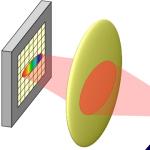Citation:

Abstract:
As traffic volumes carried by optical networks continue to grow by tens of percent year over year, we are rapidly approaching the capacity limit of the conventional communication band within a single-mode fiber. New measures such as elastic optical networking, spectral extension to multi-bands, and spatial expansion to additional fiber overlays or new fiber types are all being considered as potential solutions, whether near term or far. In this tutorial paper, we survey the photonic switching hardware solutions in support of evolving optical networking solutions enabling capacity expansion based on the proposed approaches. We also suggest how reconfigurable add/drop multiplexing nodes will evolve under these scenarios and gauge their properties and relative cost scalings. We identify that the switching technologies continue to evolve and offer network operators the required flexibility in routing information channels in both the spectral and spatial domains. New wavelength-selective switch designs can now support greater resolution, increased functionality and packing density, as well as operation with multiple input and output ports. Various switching constraints can be applied, such as routing of complete spatial superchannels, in an effort to reduce the network cost and simplify the routing protocols and managed pathway count. However, such constraints also reduce the transport efficiency when the network is only partially loaded, and may incur fragmentation. System tradeoffs between switching granularity and implementation complexity and cost will have to be carefully considered for future high-capacity SDM–WDM optical networks. In this work, we present the first cost comparisons, to our knowledge, of the different approaches in an effort to quantify such tradeoffs.

